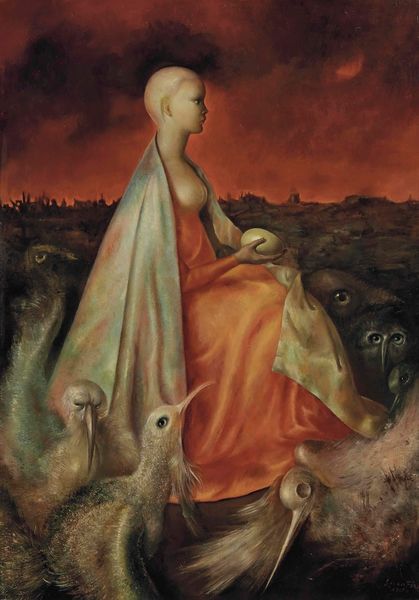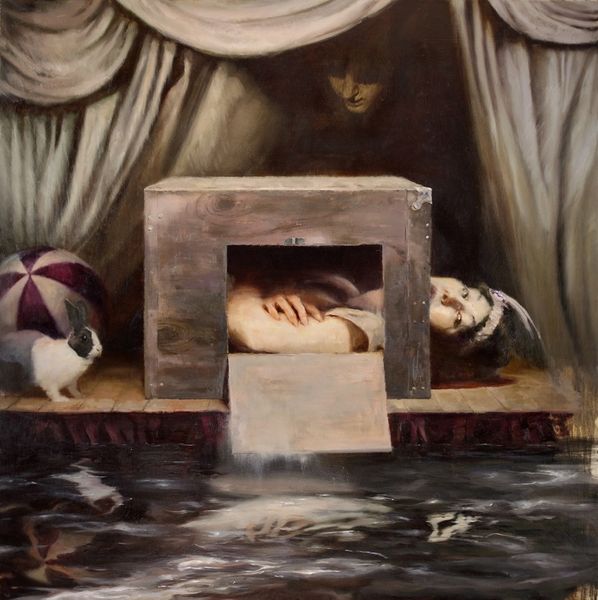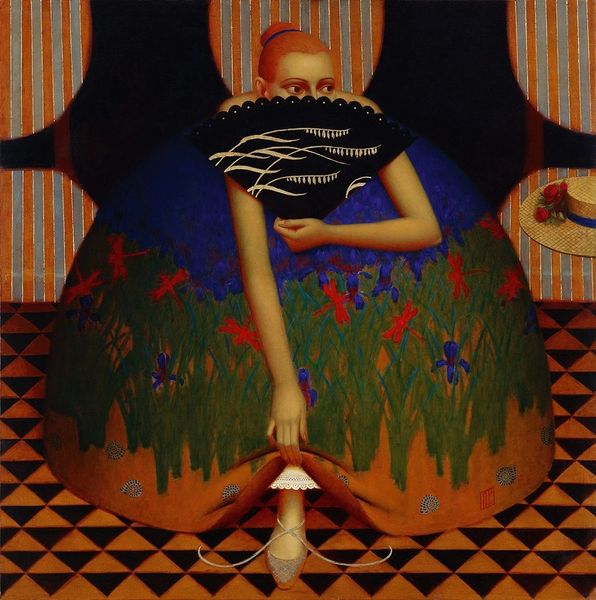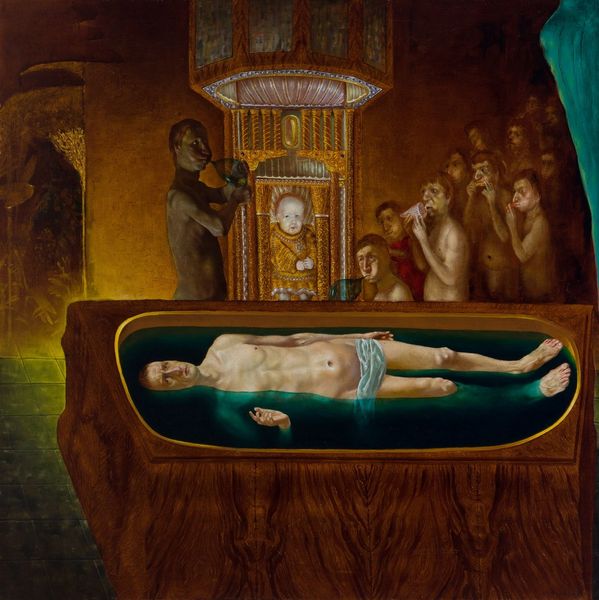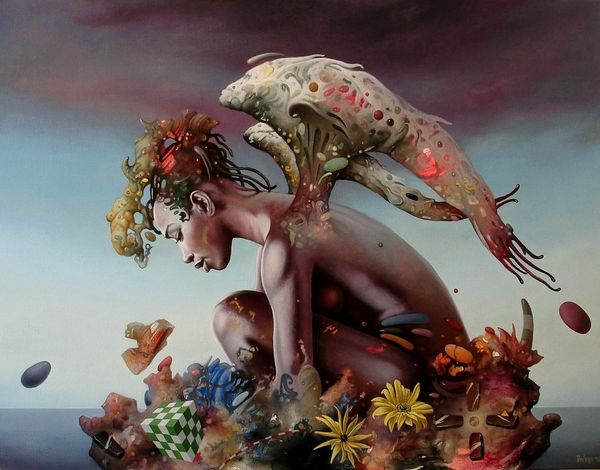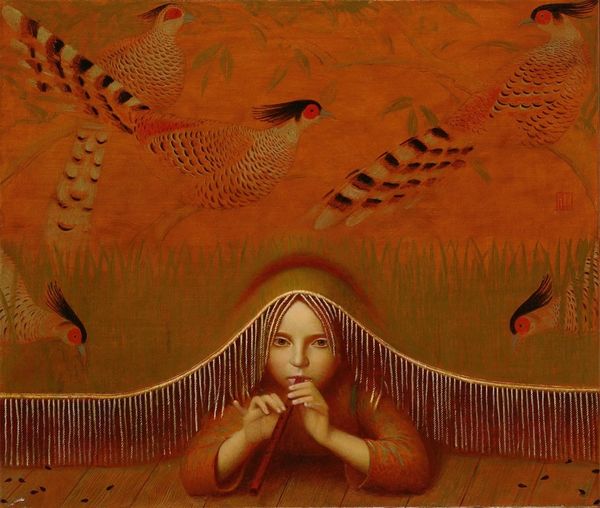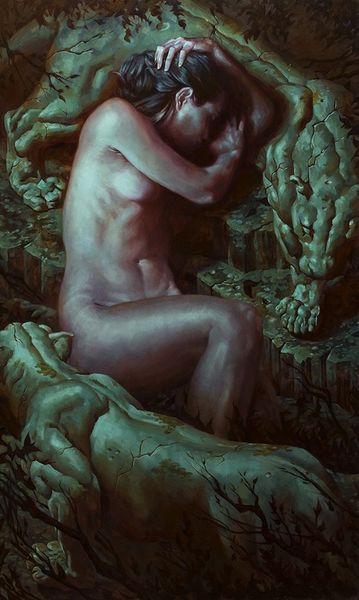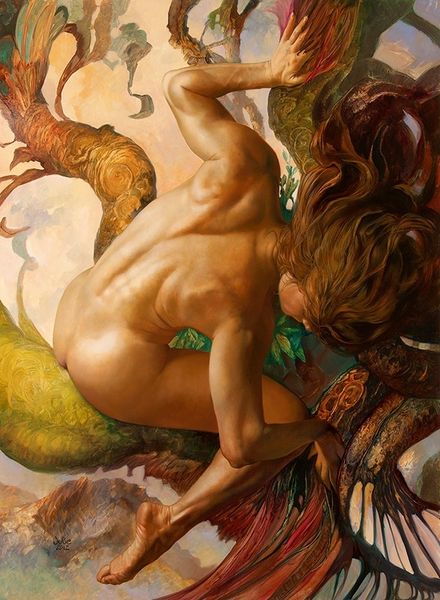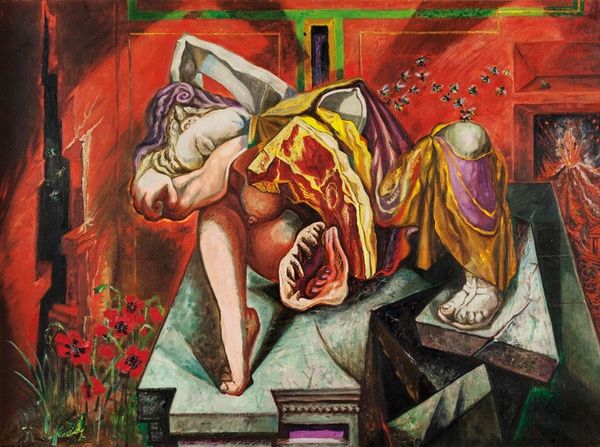
Copyright: Alexander Roitburd,Fair Use
Editor: This is "Young Woman in a Spanish Dress" from 2012 by Alexander Roitburd, created with oil paint. The scene feels so heavy and symbolic. The woman, the birds, even the clock... it’s all very dramatic. What do you see in this piece, looking at it through the lens of materiality? Curator: Well, let's start with the oil paint itself. The materiality of oil allows for rich colors, and layering gives depth. Look at the way the light catches the woman's green dress – the artist is clearly manipulating the medium to create texture and form. I would consider not only what's *depicted* but *how* it's depicted. Is this an off-the-shelf canvas? Are the materials locally sourced? Thinking about the act of painting – the artist's labor – shapes our understanding. What relationship might the "Spanish Dress" reference? Does it have symbolic weight as it is constructed by synthetic or organic cloth and dyes, and how does its making have historical meaning? Editor: That's fascinating. I hadn't really thought about the actual paint itself. The fact that it’s oil paint versus, say, acrylic really changes how we see it, the value judgments and assumptions involved, doesn't it? Curator: Exactly! Think about the production process, the acquisition of the pigments, and the potential social and economic implications of choosing those materials. Is it trying to imitate, and thus capture value from, oil painting? Or perhaps comment on what art *is*? It encourages you to rethink "Spanish Dress" beyond just a style; perhaps to the material circumstances of its origin, labor and value creation. Editor: So, by considering the materials and the methods, we’re getting at deeper layers of meaning about its function and value. Curator: Precisely. Editor: I guess it's easy to just look *at* a painting, without thinking about *what* makes it. Thanks. That helps!
Comments
No comments
Be the first to comment and join the conversation on the ultimate creative platform.
